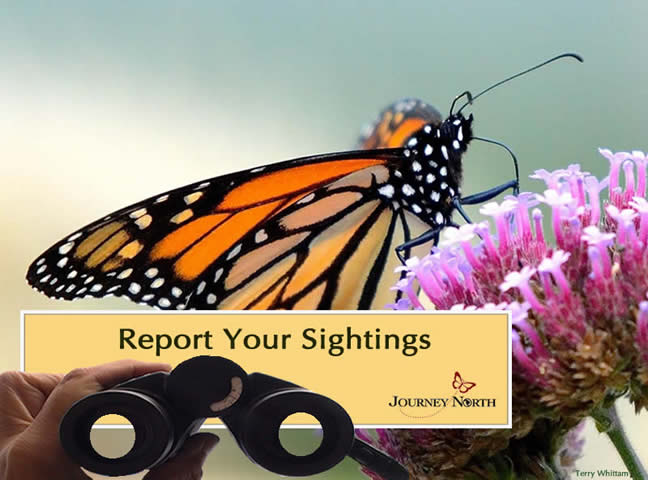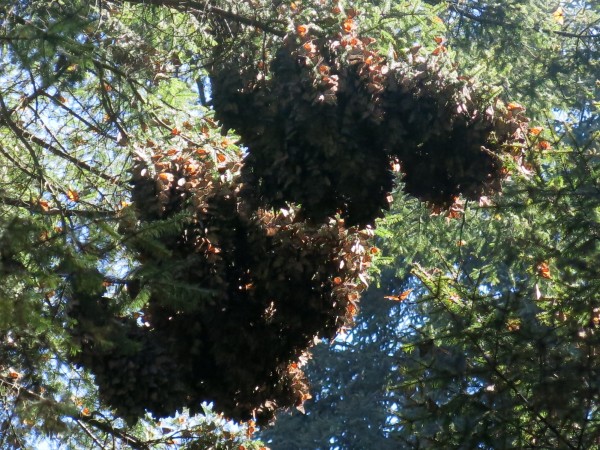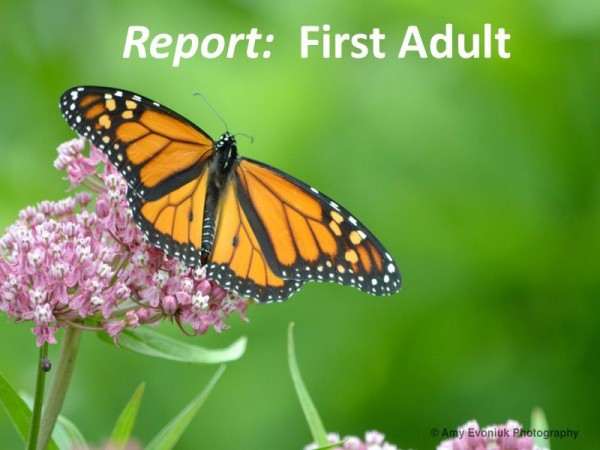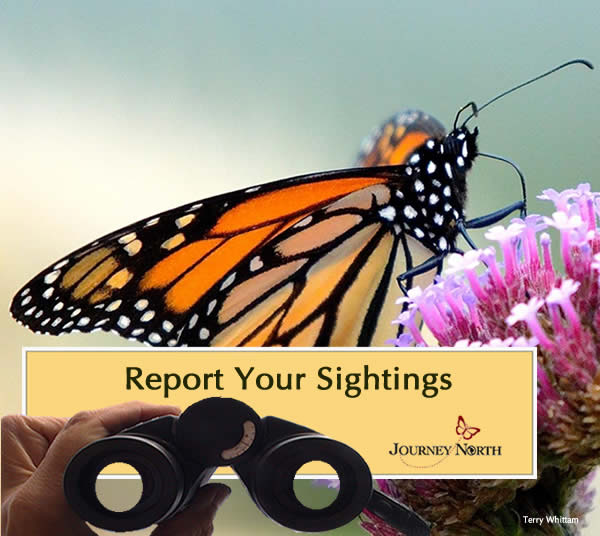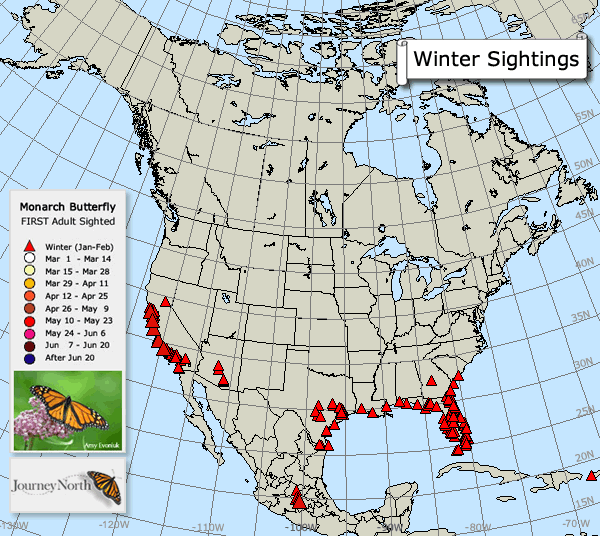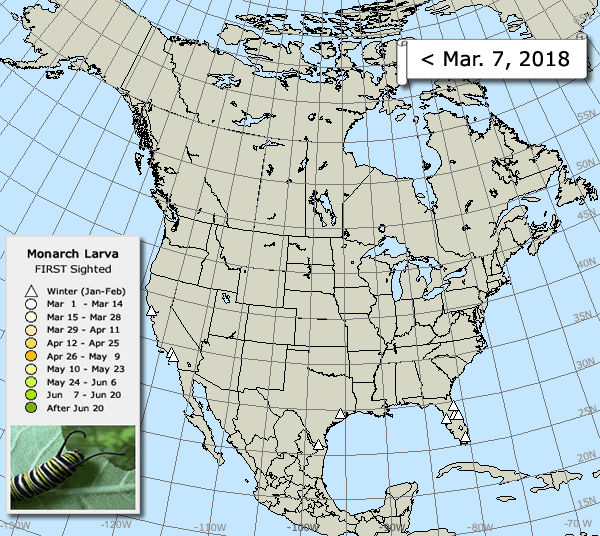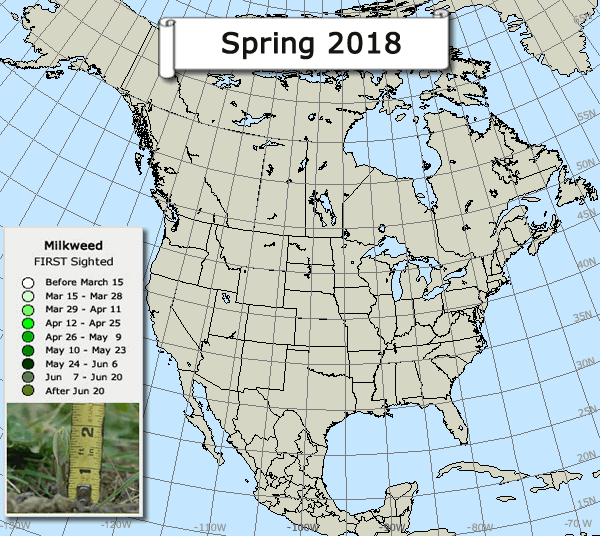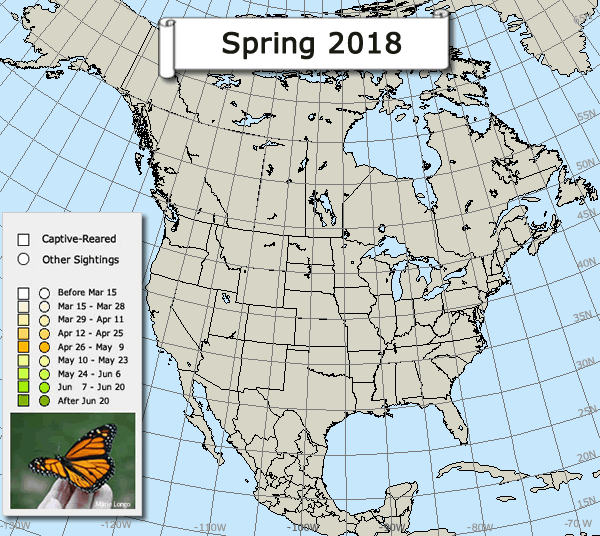The Next Generation
Laying eggs as they travel, northbound butterflies are delivering the next generation.
Off With the Wind!
Strong south winds blew northward from Texas for 5 days last week and the migration advanced dramatically into Arkansas and Oklahoma. The northernmost monarch was reported from 36°N in Tulsa, Oklahoma, only 60 miles from the Kansas border. The migration’s leading edge moved 200 miles during the past week and is now 1,200 miles from the winter sanctuaries in Mexico. The number of butterflies people are counting is also impressive:
- 36 in 3 hours on March 25th in Ozan, Arkansas
- 17 in 20 minutes on March 25th in Idabel, Oklahoma
Critical Time
The monarchs are racing northward to produce the next generation. Now in reproductive condition, the biological clock is ticking. Most of these monarchs will reach the end of their lives by the end of April. The butterflies have been urgently laying eggs.
"I looked at 268 milkweed plants and found a total of 332 eggs and 57 larvae," wrote Kathy Metzger from Montgomery, Texas. More...
Critical Habitat
The size of the next generation will largely be determined by the quality of breeding habitat in Texas, and neighboring states to a lesser extent. Reproduction is concentrated in this region in early spring where the temperatures are favorable and the vegetation is ready.
Thousands Remain!
Estela was surprised to find thousands of monarchs at El Rosario when she visited on Monday, March 26th. The butterflies were drinking, nectaring, flying, and mating. She returned on March 28th for any last minute news, and was astonished by what she saw:
"I am just arriving from Rosario and you cannot believe! The monarchs are now all concentrated at the main spot in Llano Cruzado and it looks just as if they had just arrived! Around 12 trees are full in their mid to low branches. This is March 28 and it is unbelievable. People at the Sanctuaries say: 'This is like a miracle! It is indeed a blessing!'" More...
Share Your Appreciation
Spring Migration 2018
Report all monarchs you see — adults, eggs, larvae.


